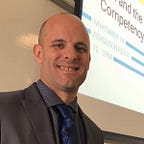Engaging students with AI
Previously, I discussed my history of engagement with mathematical problems that were able to engage students across all stripes. Problems like the Taco Cart problem, the Domino Spiral etc I loved using in my classrooms.
But now AI is changing what is possible — both for teachers and for students. The ability to not just create content but extrapolate it and in some cases, give students a greater voice — is available to everyone. But how to use it in the classroom?
Background
Immediately after writing my last blog post, I came across this twitter post from an education investor that talked a lot about AI-powered education startups.
The replies and the subsequent newsletter post were amazing. I had an idea of what I wanted to talk about but some of the startups out there are already doing things.
One of my favorites personally was Koalluh, which uses AI to build stories for kids.
One of my favorite things about having 6–8 year old girls is watching and hearing them write and then read their own stories. It’s never the same. It’s always entertaining. So I believe the concept of this app is to have kids start a story then read what is created, probably with AI-generated drawings as well.
ChatGPT
Last week OpenAI announced the public availability of ChatGPT — based off of InstructGPT but more conversational.
However, here’s perhaps the most interesting application of AI — can it solve traditional or more advanced math problems?
First, I asked it a pretty guided question involving the pythagorean theorem:
“How do I use the pythagorean theorem to solve for the hypotenuse when the other two sides are 9 and 16?”
Then, I removed some scaffolding hints from the prevoius question:
Pretty impressive — code included.
Next, I wanted to see if it could be used to help people know how to solve broader cases:
“How can I find the missing side of a non-right triangle?” and…
As to where we go from here, I’m still thinking about it…
